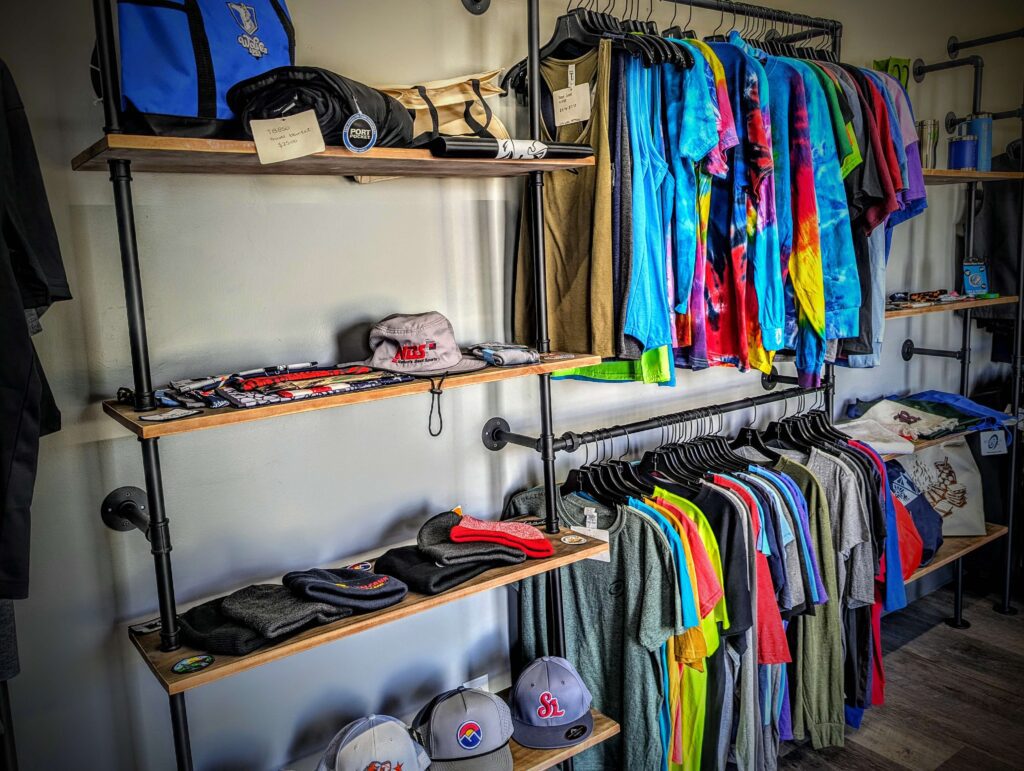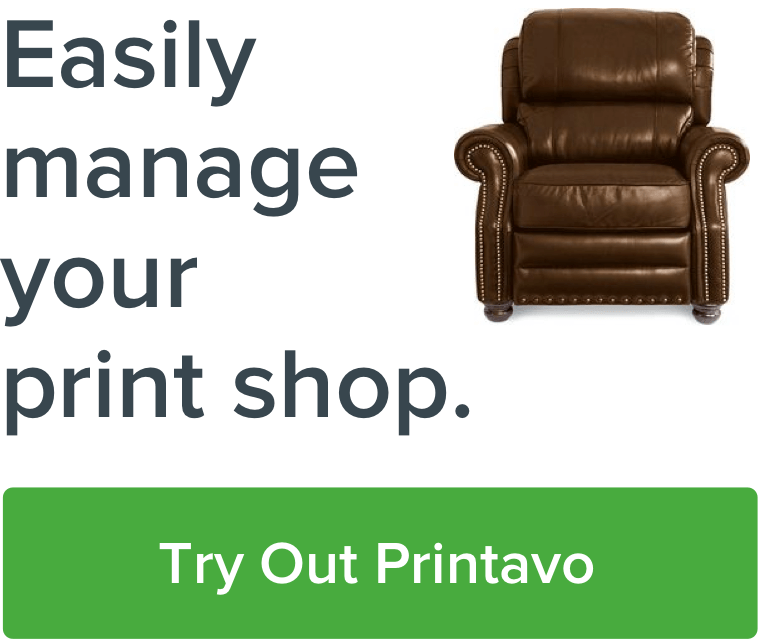Should you print direct-to-film transfers in-house or outsource? Grab a free copy of our comparison chart, then read on to learn the benefits and challenges of both approaches.
Thanks to its versatility and vibrant color output, the popularity of Direct-to-Film (DTF) printing has grown considerably in the last few years. Should you invest in in-house DTF production or outsource your transfers? Here’s a look at the advantages and challenges of both approaches, as well as questions to consider before making the jump.
1. Are You Ready to Spend or Save?
Like bringing any production in-house, adding DTF to your lineup means buying equipment. Think printer, shaker, and dryer (if you don’t already have one), costing anywhere from $15,000 to $50,000 or more. There’s also time to account for training your team and equipment setup and maintenance, which will be part of your overhead.
Adding equipment builds long-term asset value, which can be enticing if you plan to sell the business one day, are ready for the commitment, and can afford to buy new equipment.
If you’re more concerned about saving money and building a more foundational business, outsourcing can be a good option for DTF. Typically, you’ll need a heat press to apply the transfers, which most print shops already have. This approach is also a great way to test the waters and see if you have enough customer demand for DTF prints before you make the full investment.
2. Do You Have the Demand?
In-house production can significantly boost your profit margins, particularly on high-volume and repeat jobs. However, equipment maintenance and consistent production schedules are required to keep up with the order volume. If you’ve got ample staffing and a production schedule with space for another printing line, bringing DTF in-house can be lucrative in this scenario.
Outsourcing offers slimmer margins (typically 15-25%) if you’re unsure of the demand. It also simplifies your pricing since you don’t have to account for as many labor hours, maintenance downtime, and overhead for other things like utilities, supplies, etc.
3. Who’s in Charge of Quality Control?
Printing your own transfers gives you total control over print quality and color matching. If you and your team are fast learners, you can add DTF printing as another selling point to customers who want a business that can provide them with top-notch work for decorated apparel and merchandise.
Meanwhile, outsourcing your printed transfers means placing that responsibility in the supplier’s hands. Thanks to the market demand, there are quite a few options now for printed transfers, so you’ll have plenty to choose from. The key is partnering with a supplier with consistent quality, stable inventory levels, and ample support if there’s ever an issue with print quality or color matching.
4. How Important Are Rush Orders?
Does your shop do a lot of rush orders? In-house production offers same-day flexibility, provided all your equipment is well-maintained and you have the staff to handle the volume of orders.
If you’re not as concerned about last-minute orders, outsourcing usually has a window of roughly 2-5 business days.
5. What is Your Inventory Strategy?
In-house production of DTF transfers means managing consumables like blank transfers, powders, and inks. If you’re a shop that already stocks heavy inventory for all your other services, it might be a simple matter of designating part of your warehouse space to DTF supplies.
If you’re more interested in running a print-on-demand model that frees up the need for inventory space, outsourcing DTF lets you print orders without making that extra space. If you are outsourcing, ensure you’re working with a reliable supplier who can consistently fill your orders, since you don’t want to delay customer orders because of limited stock abruptly.
6. Are You Scaling Up or Scaling Down?
This consideration varies widely for print shops since plenty of businesses just want to maintain what they have instead of continuing to grow. Some want to scale up over time, while others fluctuate depending on customer demand and broader economic factors.
Owning your equipment lets you scale your operations up gradually, printing DTF transfers based on your growing order volume. It’s worth considering that you’ll still want some sort of regular business you can count on for DTF prints, though, because if overall customer demand dips for DTF prints, you’re essentially stuck with a piece of equipment that’s not making you any money.
Outsourcing, meanwhile, can help you scale instantly. If you have busier seasons like back-to-school, corporate clients with busier quarters, or annual events with built-in guarantees, you can scale up for those peaks in order volume. When you hit the slower seasons, you don’t have equipment around collecting dust, which costs you money, and you can pivot to whatever is more profitable for your business, whether that’s a different customer category or printing type.
Real-World Examples
What does it actually look like to put in-house DTF printing or outsourced transfers to work at your shop? Here’s a snapshot of a few Inktavo and ROQ customers who are implementing DTF at their business.
- Swagify (Print-on-Demand)
- Challenge: High-volume POD operation needed to scale from DTG to DTF while maintaining speed and reducing labor costs.
- Solution: Invested in a ROQ IMPRESS automation system for in-house DTF application, achieving 400 transfers per hour with 75% labor cost reduction compared to their previous DTG setup.
- Result: Transformed from a manual 2-person pre-treatment process to single-operator automation, processing over 200 pieces per hour.

Image courtesy ROQ.US
- MJ Corp (Full-Service Print Shop)
- Challenge: Customers wanted full-color designs without screen printing setup costs.
- Solution: Implemented a ROQ IMPRESS for in-house DTF production, adding the option for photo-realistic DTF prints and more color options.
- Result: Expanded service offerings to include everything from onesies to neck labels, with faster turnaround times and increased customer satisfaction.

Image courtesy ROQ.US
- BeeGraphix (DTF-Focused Business)
- Challenge: Needed to pivot from screen printing to accommodate smaller order quantities and faster turnaround times.
- Solution: Switched entirely to DTF production and partnered with InkSoft for online stores, managing over 1,000 customer storefronts.
- Result: 300% order volume growth, reduced production time from 5 weeks to 5 business days, with $9,700 in sales on a single slow-season day.
- SKAZMA Custom Apparel (Outsourced DTF)
- Challenge: Needed to expand decoration services beyond embroidery and screen printing without expanding physical space or investing in additional equipment.
- Solution: Chose to outsource DTF transfers from a regional supplier to simplify smaller jobs and full-color prints while focusing on customer relationships.
- Result: The shop has continued to grow its footprint with repeat customers like schools and local businesses and uses Printavo to simplify production. Meanwhile, they’ve remained flexible for one-off jobs and multi-colored prints with outsourced DTF transfers.

Final Thought: What’s Right for You?
If you print 500+ monthly transfers or have frequent custom/rush jobs, in-house production might be the move. Outsourcing can be a low-risk way to start if you’re a lean operation with a small staff interested in testing the waters with DTF.
Need help deciding?
Download our free DTF Decision Planner and contact the teams at Inktavo and ROQ.US for expert help with automation, e-commerce, and business strategy.

0 Comments